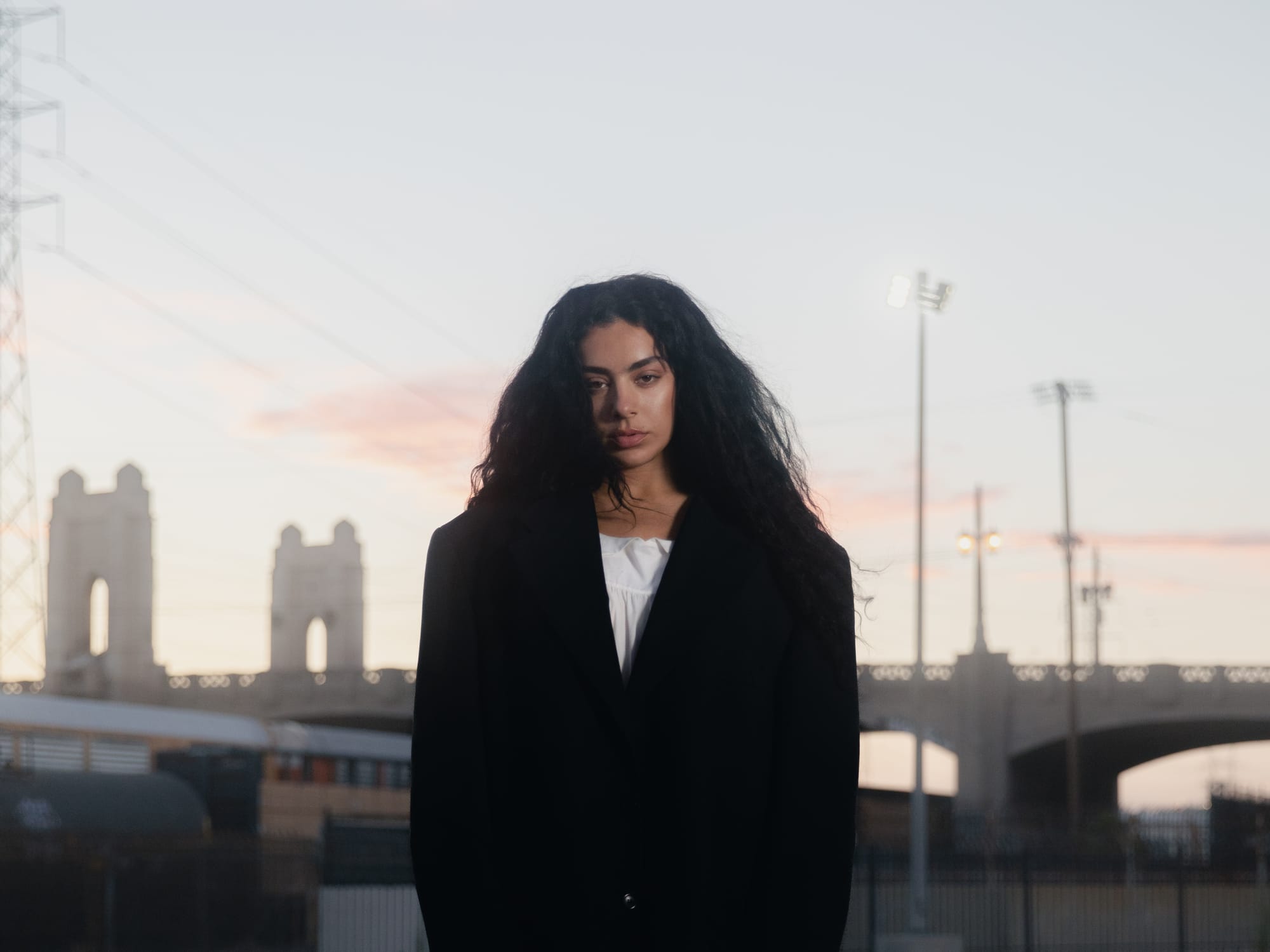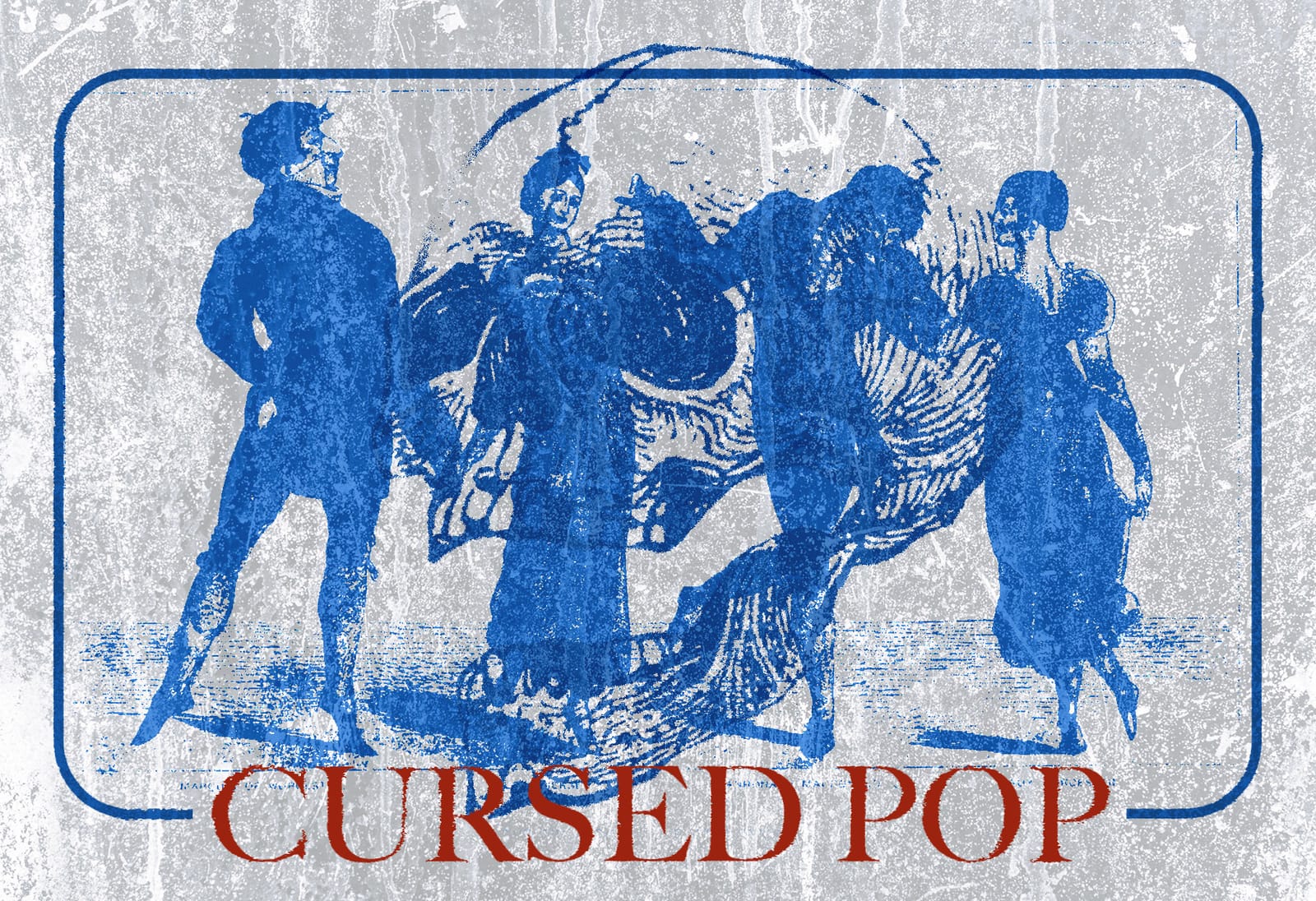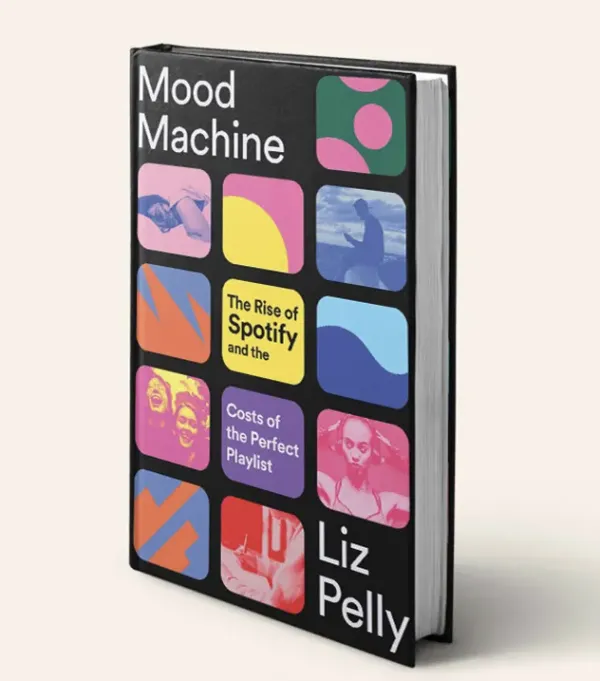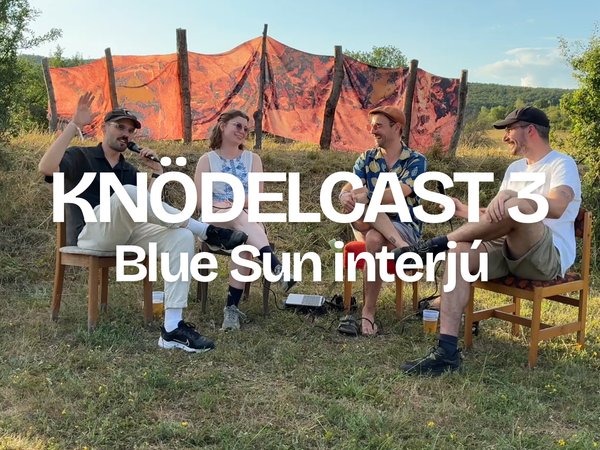Register for free to receive our newsletter, and upgrade if you want to support our work.
There is a new genre in town: punchier than your average Billboard Top whatever queen, and witchier than anything these days; it would be like a warehouse rave party if everyone cared to dance with each other while holding hands. Where did it come from, what does it sound like, and who are these folks? Tag along and let’s find out.
Brat As An Indicator
Last year’s brat was not only the new album of Charli XCX. It was a pop cultural moment, grabbing the zeitgeist of our contemporary times that resonated not only with seize-the-day Gen Z-ers or Millenials who already knew Charli for the past 10+ years, but it slipped into meme culture and corporate marketing realms too. One can suspect that it was designed to achieve this effect, but ultimately it reached a wide audience by putting itself on the radar for Gen X as well; it even had its tiny, and bit cringey role for the US election campaign. With its simplicity and ambiguity, the term ‘brat summer’ gained a rather widespread popularity, and as the outro visuals of Charli’s 2025 Coachella show implied, it’s likely not going anywhere anytime soon (“does this mean that brat summer is finally over? [...] yes cuz duh it was already over like last year. wait was it? NO? [...] honestly, I just want this moment to last forever - please don’t let it be over”). Since brat came out (June 2024), Charli toured it only in the US and the UK in that year, so it makes perfect sense to go on, and reach other continents with the brat tour in 2025.
The reason I brought up brat is that, apart from its cultural significance, it also embodies something interesting musically: the intertwined, tightly woven production and performance of music that both depicts high-energy, club music elements (e.g. raw, hard hitting beats with a minimal amount of synths, mostly bass) and traditional, pop music aspects (e.g. vocals, a personal touch by the artist, emotive lyrics). We can notice a dual nature apparent in brat, that embodies aspects from two quite different music genres. As A.G. Cook, a long-time collaborator & art director of Charli XCX (and one of the producers of brat) mentioned in an interview last year:
“I work with people who are involved in pop music at a high level and they see me as a weirdo who’s ready to inject some strange thing,” [...] “Then I work with my friends who are doing club nights and they see me as the mainstream guy who has experience working with bigger artists.”
This quote very well depicts the in-between-ness of not only Cook, but of the whole brat album, and thus, the genre it is building on. What genre are we talking about, you ask? Well, it’s hard to put a finger on that, but I’m thinking of something that came from the PC Music-era, went on to become hyperpop, and now exists as something yet to be determined. Brat did not pop up overnight, but fits into a line of musical evolution. Brat did not kick off anything new, but it was a great indicator of something that was in the works in the background for years (decades, even), that affects and results from both pop and electronic dance music.

Two Worlds Converge
On the one hand, it is getting noticeable how high-profile pop artists are experimenting with bringing club-like, electronic dance-music elements into their art. As a non-exhaustive list, I could mention tracks from Beyonce’s Renaissance album from 2022 (‘America has a Problem’, ‘All up in Your Mind’, the latter produced by A.G. Cook), the last two minutes of Billie Eilish’s ‘L’Amour de Ma Vie’ from her last year’s release, or her collab on Charli’s ‘Guess’. Miley Cyrus’ latest album that came out this year in May also features beat-driven tracks with heavy kicks; and FKA Twigs latest album (which also came out this year) strikes an apparent contrast to her previous album (Caprisongs, 2022) that was way more airy, light, playful and R&B-centered.
On the other hand, new and emerging artists that operate mainly within the realms of club music, tend to embody more and more characteristics of vocal-based, emotional pop music. To drop a few names, MCR-T immediately comes to mind, a Berlin-born and -based producer, DJ and songwriter who can handle any kind of situation, whether it’s a Boiler Room set, a ghettotech banger or a collab with Miss Bashful. There are a few “boy & girl” projects out there too such as Bassvictim, BRUTALISMUS 3000, ascendent vierge or Animistic Beliefs, and surely a ton more. I’m not trying to make a claim with the implied logic that may be suggested by the previous paragraph, that these artists started out as purely instrumental projects, and then later on applied vocals and more popular music structures (actually, this may possibly be the case for Animistic Beliefs, but anyway). The births of genres, music projects and the malleable, adaptive nature of pop music never suggested this type of two-way relationship (pop and club culture equally affecting each other): instead, in our case, what we can see, is that:
- New musical acts are inspired by club culture, and create their own thing (e.g. BRUTALISMUS 3000).
- Further musical acts are both inspired by club culture and pop music, or maybe even experimental genres, and they do their own thing (see next chapter).
- High-profile pop acts are trying to keep up (good luck to them).
Next Chapter – The Nomenclature
In better times, journalists or just the fans came up with decent names regarding up-and-coming genres that were lacking a cool and catchy term. I haven’t really heard any good names for what I’m trying to grasp, but fortunately, a friend of mine came up with cursed pop – a term that very well describes the off-kilter, often sinister and witchy nature of this music, that is, more often than not, bursts with female energy, desires, introspections and feelings. I’m sticking to that, so shout-out to Zsófia Boda for coining this, I hope more people than the two of us will use it in the future.
I did meet however some funny terms, but I dismissed most of them as mostly self-promotional attempts of positioning themselves somehow in the current music-media landscape. I really liked though Miss Bashful’s slut tech or Babynymph’s traumapop terms, but yeah, most artists just went with more generic genres when describing their own work (glitch-distortion by yeule or miami bass by Basside), leaving the whole nomenclature thing to figure out for music-heads like Zsófi and me, rightfully.
Some common characteristics of cursed pop are, to name a few: kicks usually do not land on a strict four-to-the-floor beat, thus, they leave plenty of room for rhythmic experimentation; yet, the beats are still punchy enough to create danceable tracks. The synths are menacing, striking, and heavy. The humour and jolly nature of hyperpop is nowhere to be found. The atmosphere is dark, noisy, full of energy and dissonant chords, where the vocals oscillate between either being unimpressed mumblings, or reaching otherworldly heights. This is the kind of music that is too cringey and light for a serious techno gig, but too dark and disturbing for a regular Swiftie or Chappell Roan stan. It’s popping rave and raving pop, at the same time.
Pay No Attention to That Man Behind the Curtain
Our culture is obsessed with authenticity, and values that feel ‘real’ to an artist. We like to think that singular artists and auteurs are responsible for entire bodies of work that just reflect their true self, and thus, they are self-expressing. In most music production processes however, several people (production teams) are working on the tracks, each person responsible for certain aspects of the song (drum programming, vocal engineering, etc.), or just handling the overall art direction. Therefore, it is so important to understand the constructed, professional aspect of music production that is based on team-work, and give proper credit to producers too, who are, however not on stage when the main artist goes on tour, yet provided not only much of the musical background for certain albums, but involuntarily define a cohesive musical landscape through their work across many different projects. In short, keep an eye on the producers too – many times it’s really rewarding to follow what they are up to, instead of waiting for the next act of a main artist.
In the case of cursed pop, one of the first producers that come to mind is the already quoted A.G. Cook. Ever since he co-founded PC Music in 2013, he was busy with managing the label, its artists, his own music, plus songwriting & producing for an impressive and growing number of artists, like Oklou, Charli XCX, Jónsi, Troye Sivan, Tommy Cash or yeule. Until her tragic death in 2021, SOPHIE was also prominent in producing tracks for several artists, which tracks range to not just pop (Charli XCX, Basside, Madonna) but hip-hop (Vince Staples, Gaika) or whatever that thing Arca is doing since 2020 (‘La Chíqui’). Sega Bodega is another huge name: while delivering solid albums under his own name, he also has a growing number of tracks and albums he produced for. To name a few, he produced tracks for Dorian Electra, Coucou Chloe, Oklou, Shygirl, Daniela Lalita or one of my personal favorites, this summer’s sad misanthrope kid anthem, ‘Poolside Goth’ by Uffie. (Sure, not all of these are cursed pop per se, but the witchcraft does not fall far from the wizardry.)
In an interview with Toby Gad, Zhone (producer for Troye Sivan, Kesha and Charli XCX, also worked on brat) described his ars poetica, which basically comes down to the question: “what is that fine line between a DJ dance song and a pop song, and how can they be the same thing at the same time”. This very much resonates with another video, where Cook, Charli and George Daniel unpack their Logic sessions for ‘Club Classics’, Charli saying literally nothing for the majority of video in huge shades covering half of her face, but when she goes for the mic, she expresses her fondness for the plain nature of the beats:
“The thing is, [the] simplicity [of the drums] makes them really hard though, you know, even the sound of that kick is like […] if you were trying to make it like big or wide, it would be weird, it would be not right.”
Nihil Sub Sole Novum
Does this sound all fresh and exciting? Kind of, but we can also be honest for a second: there is clearly nothing new under the sun, we have already seen stuff like this before. Surely, pop always had its tendency from decade to decade to grab the current ‘cool’ or trendy musical genre and appropriate it, exploit it, and squeeze every bit out of it, until nothing is left from the original underground genre. Dance music and pop were always quite close to each other, we can pick an example for that from basically every decade since these genres exist. Still, if I were to search for pillars that served as the basis for what was to come in today’s landscape, I would look for somewhere in the late 90s, or early noughties. Rave at that time opened up for lighter, vocal-based, often funny acts (e.g. Scooter, Blümchen), The Knife with its dark electronics and vocal-based, immersive presence was formed in 1999, the same year as the analog-synth heavy, ethereal Ladytron was founded. Still, none of these matched the energy of Crystal Castles (formed in 2006), that later on defined the early youth of the millennial generation, being the punk-electro kids in the indie-era. Crystal Castles brought a perfect blend of lo-fi, ragged, synth-fueled, gnarly 8-bit club music with Alice Glass’ screaming vocals that cannot be left out from any decent indie sleaze party. I’d say they single-handedly laid down the blueprints of cursed pop, serving as a North Star for several artists to this day. (It is one of music-history’s saddest allegations, as Alice Glass wrote in 2017, that during her entire career with Crystal Castles, Glass had to endure years of emotional and psychological abuse, battery and harassment from her bandmate, Ethan Kath.)
And of course, as we arrive to the 2010s, the aforementioned PC Music & hyperpop-mania also did its decent share of pushing artists further to the cursed direction. (If you are confident in reading Hungarian, check out my article from 2 years ago, describing the journey and legacy of PC Music.)

Okay, So What's Different This Time?
There are a few key things we can point out with cursed pop:
Strong presence of harsh, nasty, distorted elements: whether it is drums, massive units of synth sounds, or just various clutters of noisy, dirty sound effects, they very much dominate most of this genre’s tracks.
Radical simplicity: no overcomplications, no traditional verse-chorus form, no big, different units taking turns. One homogenous musical soundscape per track.
Literalism: explicit, literal meanings in lyrics. Conversational. No place for misunderstanding, sexual and graphic depictions are often present.
Less funny, and more serious and devoted than hyperpop, but still fun: the overtly funny and cheeky nature of hyperpop is becoming less and less apparent. So cursed pop is not really following the 100 gecs and Dorian Electra school, but it rather focuses on more sombre, quotidian, often hedonistic lyrics.
“I’ve written the songs almost in the way I would write texts to my friends or based on things I would say to them on FaceTime.”
Charli XCX on her lyrics on brat (source).
One thing that comes to mind from the above list is that even though cursed pop comes from a tradition (partly) defined by PC Music or the Nuxxe collective (Sega Bodega, Coucou Chloe, Oklou etc.), the new genre lacks the tenderness, gentleness and lyrical sensitivity that was present prior. SOPHIE’s Oil of Every Pearl’s Un-Insides (2018), for example, while still delivers igniting, industrial instrumentals and crazy vocal manipulations, offers softer aspects, both lyrically and compositionally, opening the album with a ballad and diving into ambient territories quite often, while bringing up themes of identity, admiration and self-affirmation.
Another difference to point out would be the heightened homogeneity and short track length of the tracks. This, of course, goes hand in hand with the fact that electronic dance music is not particularly the most diverse genre, but we can also suspect some influence from social media too. To pick another example, girl_irl’s (re)introduction, which is a great album with several amazing tracks perfectly fitting into cursed pop, lists 13 songs in just 35 minutes. This means that most of the tracks are 2-3 minutes long. In the faraway past (the 2010s), this was considered to be an ideal length for a speedcore or goregrind track, but unusual for a pop song. Social media however, as it shows clearly in the early 2020s, appreciates and pushes short-form video content on its platforms – and considering the user’s perspective, the less time spent on which 30 second snippet to choose for their reel, the better for everyone. And surely, there must be other aspects to this phenomena (shortened attention span in general, less patience and time for appreciating art in general), but diving into that would be the scope of another article.
Fin
I don’t want to end on a low note – cursed pop surely is a fresh and interesting intersection of genres we already knew, and while it can sometimes feel like reinventing the wheel, I urge you to listen to some of the artists working in this genre, because as with all genres, they never stay the same. They always take inspirations and elements from other styles, and maybe even tomorrow this article would not be up-to-date anymore. So go, and check out these artists while you can.
And whom exactly? Here’s an absolutely non-comprehensive list of artists / producers in no particular order – maybe I’ll do a 1-hour mix later on I can add here, but until that, have fun discovering yourself:
sonikkku, sevdaliza, taahliah, cobrah, xkylar, umru, underscores, aya, girl_irl, coucou chloe, fka twigs, charli xcx, yeule, babii, warpstr, babynymph, jenys, mcr-t, lolo zouaï, wtrgrl, lyzza, izzy camina, brooke candy, eartheater, cecile believe / finn keane, ag cook, sega bodega, SOPHIE
This article is brought to you as part of the EM GUIDE project – an initiative dedicated to empowering independent music magazines and strengthen the underground music scene in Europe. Read more about the project at emgui.de.
Funded by the European Union. Views and opinions expressed are however those of the author(s) only and do not necessarily reflect those of the European Union or the European Education and Culture Executive Agency (EACEA). Neither the European Union nor EACEA can be held responsible for them.







